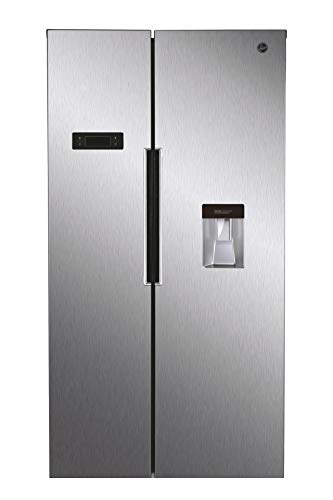Fridges and freezers are 2 of the most necessary devices in modern cooking areas. These devices serve an essential role in food conservation and waste decrease by making sure that perishable items remain fresh and safe for usage. This post digs into the numerous kinds of fridges and freezers, their performances, and important factors to consider for selection and upkeep.
The marketplace offers a range of refrigerator types, each created to meet various customer needs. Below is a list of the most common types of fridges:
Top-Freezer Refrigerators
Bottom-Freezer Refrigerators
Side-by-Side Refrigerators
French Door Refrigerators

Compact Refrigerators
| Type | Benefits | Downsides | Typical Size |
|---|---|---|---|
| Top-Freezer | Inexpensive, energy-efficient | Less convenient access to the freezer | 14-30 cu. ft. |
| Bottom-Freezer | Easier access to fresh food | Freezer can be more difficult to arrange | 19-30 cu. ft. |
| Side-by-Side | Easy access, water/ice dispenser | Narrow vs. storage space | 22-30 cu. ft. |
| French Door | Trendy, spacious, arranged | More expensive | 20-30+ cu. ft. |
| Compact | Space-saving, portable | Limited storage | 1.7-5.5 cu. ft. |
Freezers are an equally important device for food preservation. They can be found in numerous designs created to fit different family requirements. Think about the following types:
Upright Freezers
Chest Freezers
Portable Freezers
| Type | Benefits | Downsides | Normal Size |
|---|---|---|---|
| Upright Freezer | Much easier to organize | Less energy-efficient, more floor area | 5-20 cu. ft. |
| Chest Freezer | Holds more products, energy-efficient | Harder to organize | 5-25 cu. ft. |
| Portable Freezer | Compact and flexible | Limited storage capacity | 1-10 cu. ft. |
When picking a fridge or freezer, customers need to bear in mind a number of functions that can enhance performance:
While fridges and freezers are indispensable innovations, they likewise have specific advantages and downsides:

| Pros | Cons |
|---|---|
| Preserve food lifespan and minimize waste | Require regular maintenance |
| Allow bulk buying and meal prepping | Can be expensive to purchase and run |
| Deal convenience and fast access to food | Inhabit substantial cooking area space |
To ensure longevity and optimal performance of fridges and freezers, think about the following maintenance tips:
Q1: How long can food be saved in a freezer?A: Most foods can be kept in a freezer for numerous months. Meats and poultry typically last 4-12 months, while veggies can last approximately 8-12 months.
Q2: How often need to I clean my fridge and freezer?A: It is a good idea to clean your fridge and freezer every 3 to 6 months, or as required when spills take place. Q3: Can I put hot food straight in the fridge?A: It is recommended to cool hot food to space temperature level before placing it in the fridge to avoid
raising the temperature inside the appliance. Q4: Why is my fridge running constantly?A: This might be due to a malfunctioning thermostat, clogged up coils, or door seals that aren't working appropriately. Fridges and freezers are vital
properties to modern households, providing essential services for food storage and conservation.
Comprehending the different types, features, and maintenance requirements can assist consumers select the Best Fridges devices for their requirements and optimize their performance. Accepting energy-efficient designs not just supports sustainable practices however likewise contributes to considerable savings on energy expenses, making informed options more essential than ever.
No Data Found!

